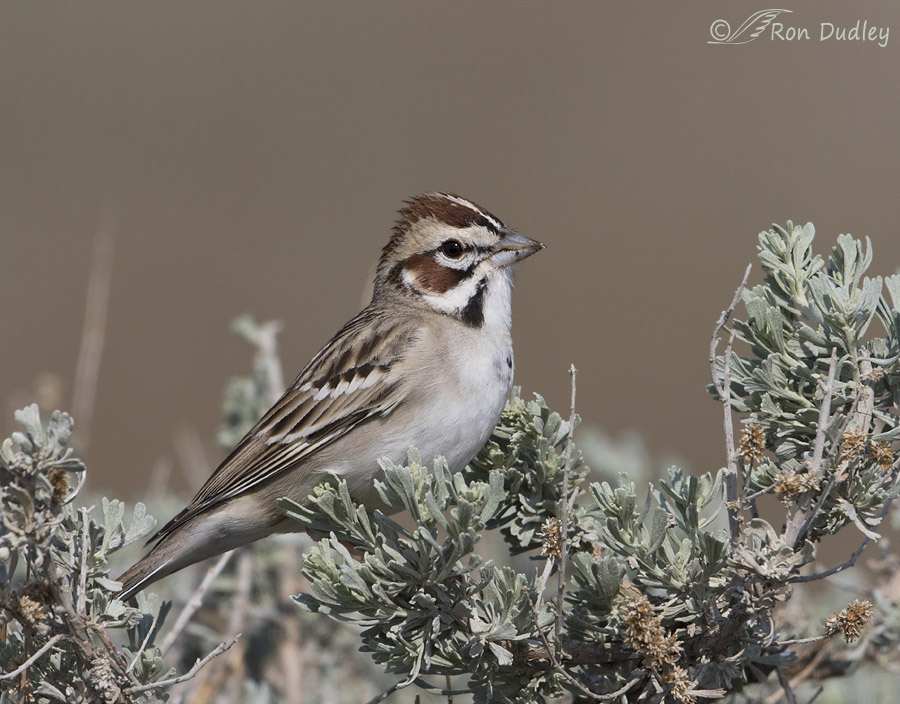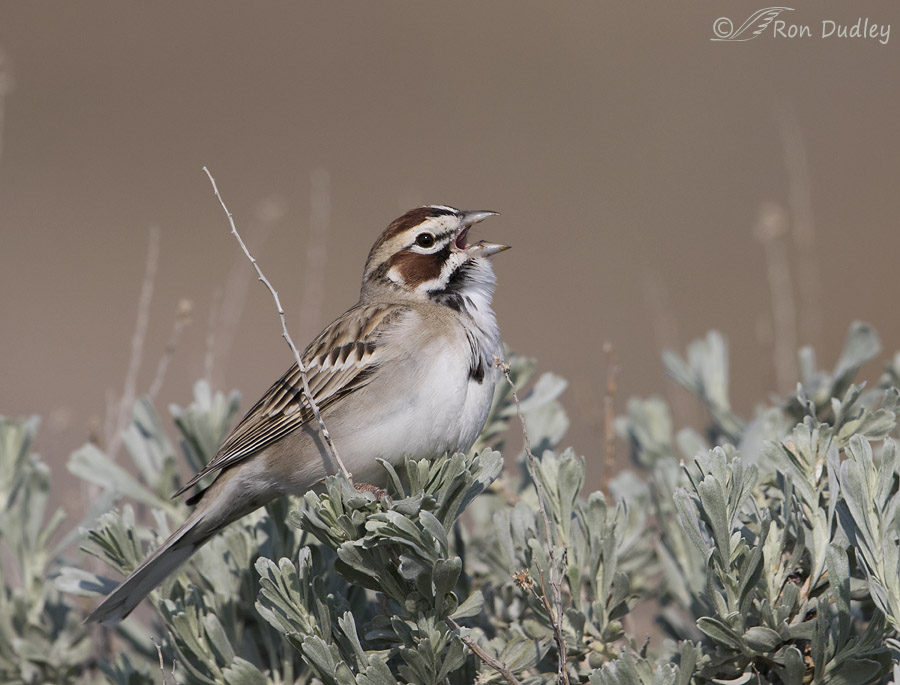Lark Sparrows are a gift to the eye and ear. Their distinctive harlequin face pattern of black, white and chestnut combined with the melodious, rich trills of their lark-like song make me long for the return of the species to Antelope Island every spring. I’ve been hearing their song recently and then four days ago I was finally able to get close enough to a couple of birds for some nice images.
 1/3200, f/8, ISO 400, Canon 7D Mark II, Canon EF500mm f/4L IS II USM +1.4 tc, not baited, set up or called in
1/3200, f/8, ISO 400, Canon 7D Mark II, Canon EF500mm f/4L IS II USM +1.4 tc, not baited, set up or called in
Lark Sparrows have an affinity for shrub-steppe sagebrush/greasewood habitat which proliferates on the lower slopes of the island and I love seeing them on their sagebrush perches after those lovely gray/green leaves come out. To be truthful, by this time of year I’m becoming a little weary of the clusters of bare vertical sagebrush stems in my images.
This bird was so sleepy that it could barely keep its eyes open – this is one of the relatively few images I could get where they weren’t half or completely closed. Perhaps it was still recovering from migration…

1/5000, f/7.1, ISO 500, Canon 7D Mark II, Canon EF500mm f/4L IS II USM +1.4 tc, not baited, set up or called in
But this one had more energy and channeled some of it into song. Lark Sparrow singing bouts occur at all hours of the day and into late evening and a single singing session may last an hour or more (I had to smile as I typed that last sentence because there’s been a robin singing in the dark from within two feet of my window for the last hour and it’s very loud!). Their song is a jumble of rich and melodious notes and trills which range in pitch and volume, interspersed with less melodious buzzes and churrs. Three songs can be heard here if you’re interested.
My fascination with Lark Sparrows is due in part to some of their unique behaviors. Courtship in the species differs markedly from that of all other songbirds in that males perform a turkey-like strut with their tail held upright and wings dropped to the ground as they flash white tail spots to the female. And in an impressive display of multitasking and concentration, during copulation the male passes a twig to the female – a behavior known in no other passerine.
I’ve photographed that behavior and posted about it in the past (that post can be seen here) but one of my goals is to do so again. That would make my day!
Ron


WOW, Ron!! What a little charmer he is!! Just loved his songs & the earlier series of photos you shared. What a beautiful set of behaviors to see. Loved all of this sparrows photos. I know you will get tired of me saying this but I’ve never seen this species of Sparrow before.
” I know you will get tired of me saying this but I’ve never seen this species of Sparrow before.”
Nope, I won’t get tired of it, Jo Ann. I’m always happy to introduce you to a new species.
I love the intensity of the singing picture. Lovely.
Thank you, Arwen.
A rich posting–between today’s birds and the reitroduction of the previous blog…very interesting. I always love the ones that show both besuty and behavior. Like the way the female can be seen “multitasking”(mating and gathering nest building material) So that’s where the term “He jumped her” comes from….
“So that’s where the term “He jumped her” comes from…”
Ha, you may be right, Patty!
Wonderful images! There is an excellent section on the Lark Sparrow, in Birds of North America, No. 488 written in 2000 by John Martin and Jimmie Parrish. Your images both current and past complement what they are saying about the Lark Sparrow. I saw the species out west when we traveled there, and also saw one that visited MA some years ago. They at times will be seen here in the east. They are a very distinctive bird in many respects. Thanks for sharing.
Wow, Dick – a Lark Sparrow in MA. Bet that got your attention! Thank you.
Yes it did, in fact it got many birders attention!!